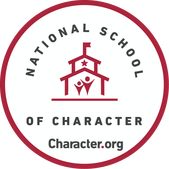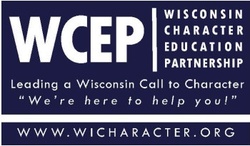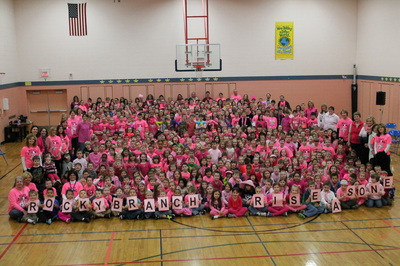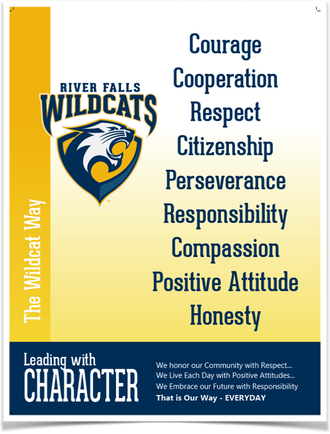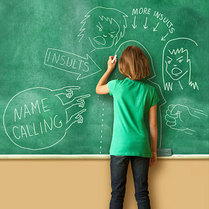CHARACTER EDUCATION IS MAKING A POSITIVE IMPACT IN THE RIVER FALLS SCHOOL COMMUNITY
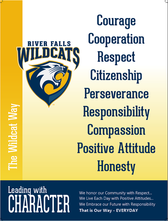
The purpose of the River Falls Character Education website is to share the positive impact character education is making throughout the River Falls Community. Click on the links above to visit each school's character education webpage.
THANK YOU VETERANS!
November 2020
GREENWOOD ELEMENTARY SCHOOL is a
2017 NATIONAL SCHOOL OF CHARACTER!
MEYER MIDDLE SCHOOL is a
2016 NATIONAL SCHOOL OF CHARACTER!
May 2016
Character.org Designates 67 Schools 4 Districts as 2016 National Schools of Character
Program developed in 1998 has positively impacted the lives of more than 825,000 students
Washington, D.C. (May 10, 2016)-- Character.org, a non-profit organization that supports the advancement of character development in schools, communities and workplaces across the U.S. and globally, today designated 67 schools and four districts from 15 states as National Schools and Districts of Character for 2016.
Meyer Middle School has been selected as a 2016 National School of Character. Character education in the School District of River Falls began in 2009 as a result of the district’s comprehensive strategic plan and can be found embedded throughout the entire school system.
“ We are incredibly proud of our students and staff at Meyer Middle School and the impact character education is making throughout our school community.”
--Mark Chapin, Principal-Meyer Middle School
Since the inception of Character.org’s Schools of Character program’s in 1998 more than 263 schools and 14 districts have been designated as National Schools or Districts of Character, impacting more than 600,000 students’ lives. (A complete list of the 2016 National Schools and Districts of Character is outlined at bottom of this release). In addition, this year, two international schools have applied and will be evaluated for international recognition as a part of a pilot international program once the National Schools of Character have been announced,
Each year, Character.org (formerly The Character Education Partnership) and its state affiliates select schools and districts that demonstrate a dedicated focus on character development programs that show positive impact on academic achievement, student behavior and school climate. Schools and districts selected in January as State Schools of Character along with those schools who reapplied in their 3-year designation of State School of Character were forwarded to Character.org for consideration for national recognition as National Schools of Character.
Through an in-depth and rigorous evaluation process, these schools were found to be exemplary models of character development. Of the schools named today, one district and 14 schools are former National Schools of Character reapplying for the national designation. Criteria for selection are based on Character.org’s 11 Principles of Effective Character Education, a guide to providing students with opportunities for moral action, fostering shared leadership and engaging families and communities as partners in the character-building effort.
"We are extremely proud of this year’s designated schools and districts for their dedication to character development which has proven to increase the well-being of so many students’ lives across the United States and beyond ," said Becky Sipos, Character.org’s President & CEO. "These character initiatives create conditions for learning where students are thriving and growing into ethical members of our society. They are developing lifelong skillsets they will leverage well into their adult lives.”
Character.org will honor the designated schools and districts at its 23rd National Forum on Character Education to be held the weekend of October 14-15, 2016, in Washington, DC. Visit www.character.org to learn more about the National Forum, the Schools of Character program (State & National), and the 2016 national honorees.
Program developed in 1998 has positively impacted the lives of more than 825,000 students
Washington, D.C. (May 10, 2016)-- Character.org, a non-profit organization that supports the advancement of character development in schools, communities and workplaces across the U.S. and globally, today designated 67 schools and four districts from 15 states as National Schools and Districts of Character for 2016.
Meyer Middle School has been selected as a 2016 National School of Character. Character education in the School District of River Falls began in 2009 as a result of the district’s comprehensive strategic plan and can be found embedded throughout the entire school system.
“ We are incredibly proud of our students and staff at Meyer Middle School and the impact character education is making throughout our school community.”
--Mark Chapin, Principal-Meyer Middle School
Since the inception of Character.org’s Schools of Character program’s in 1998 more than 263 schools and 14 districts have been designated as National Schools or Districts of Character, impacting more than 600,000 students’ lives. (A complete list of the 2016 National Schools and Districts of Character is outlined at bottom of this release). In addition, this year, two international schools have applied and will be evaluated for international recognition as a part of a pilot international program once the National Schools of Character have been announced,
Each year, Character.org (formerly The Character Education Partnership) and its state affiliates select schools and districts that demonstrate a dedicated focus on character development programs that show positive impact on academic achievement, student behavior and school climate. Schools and districts selected in January as State Schools of Character along with those schools who reapplied in their 3-year designation of State School of Character were forwarded to Character.org for consideration for national recognition as National Schools of Character.
Through an in-depth and rigorous evaluation process, these schools were found to be exemplary models of character development. Of the schools named today, one district and 14 schools are former National Schools of Character reapplying for the national designation. Criteria for selection are based on Character.org’s 11 Principles of Effective Character Education, a guide to providing students with opportunities for moral action, fostering shared leadership and engaging families and communities as partners in the character-building effort.
"We are extremely proud of this year’s designated schools and districts for their dedication to character development which has proven to increase the well-being of so many students’ lives across the United States and beyond ," said Becky Sipos, Character.org’s President & CEO. "These character initiatives create conditions for learning where students are thriving and growing into ethical members of our society. They are developing lifelong skillsets they will leverage well into their adult lives.”
Character.org will honor the designated schools and districts at its 23rd National Forum on Character Education to be held the weekend of October 14-15, 2016, in Washington, DC. Visit www.character.org to learn more about the National Forum, the Schools of Character program (State & National), and the 2016 national honorees.
RIVER FALLS HIGH SCHOOL PEP CLUB KICKS OFF THEIR 2016 T-SHIRT DRIVE WITH "WE ARE WILEY" VIDEO
PROUD TO BE A CAT!
February 2016
MEYER MIDDLE SCHOOL NAMED
2016 WISCONSIN SCHOOL OF CHARACTER
January 2016
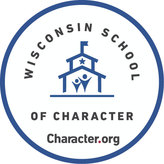
Meyer Middle School was one of three schools named by the Wisconsin Character Education Partnership as a 2016 Wisconsin State School of Character! Meyer Middle School will be receiving this award in June at the Wisconsin Character Education Conference in Milwaukee, WI. This award is a reflection of the staff, students and parents of Meyer Middle School, as well as the work of our elementary schools in developing positive character throughout our school community.
RIVER FALLS COMMUNITY
CHARACTER EDUCATION
BREAKFAST & FORUM
November 13, 2015
The River Falls School District hosted their first annual Community Character Education Breakfast and Forum on November 13th at the River Falls High School. Forty-one community members from businesses and civic organizations participated in the event along with the River Falls School District Character Education Steering Committee members. The purpose of the meeting was to collaborate and share ideas on how we can collectively promote, support and grow character education throughout the River Falls Community.
GOT CHARACTER?
CHARACTER EDUCATION UPDATE FROM AROUND THE DISTRICT
CONGRATULATIONS TO THE RIVER FALLS SCHOOL DISTRICT ON THEIR 2015 WCEP STATE PROMISING PRACTICE AWARD--APR 2
"A District Approach for Moving Character Education Forward"
"A District Approach for Moving Character Education Forward"
|
2015 WCEP STATE PROMISING PRACTICE AWARD
"A District Approach for Moving Character Education Forward" The River Falls School District Character Education Steering Committee will be recognized on June 18th, 2015 at the Wisconsin Character Education Conference for their district wide efforts to promote character education through a collaborative shared leadership approach. |
RIVER FALLS SCHOOL DISTRICT "PINK-OUT" -- FEB 3
The River Falls School District raises $2500 for the Susan G. Komen Foundation.
BUILDING CHARACTER
RFSD EMPLOYEES PARTICIPATE IN HABITAT FOR HUMANITY BUILD--June, 2014
RESOURCES FOR PARENTS
http://www.micheleborba.org/Pages/Articles.htm
 Dr. Michelle Borba
Dr. Michelle Borba
Dr. Michele Borba is an internationally recognized expert and author on children, teens, parenting, bullying and moral development. Her work aims to help strengthen children’s character and resilience, build strong families, create compassionate and just school cultures, and reduce peer cruelty. Her practical, research-based advice is culled from a career of working with over one million parents and educators worldwide.
Michelle Borba's website serves as a wonderful resource for parents on topics such as: Violence Prevention and Bullying; Teasing & Put Downs and Peer Pressure.
Check out Dr. Borba's Resource Page:
http://www.micheleborba.org/Pages/Articles.htm
Michelle Borba's website serves as a wonderful resource for parents on topics such as: Violence Prevention and Bullying; Teasing & Put Downs and Peer Pressure.
Check out Dr. Borba's Resource Page:
http://www.micheleborba.org/Pages/Articles.htm
In an NBC’s Dateline special: “The Perils of Parenting,” I appeared as the expert on bullying. Producers asked me to teach middle school students–when bullying peaks–specific bystander strategies to deal with bullies. I developed the techniques after reviewing dozens of studies on the “Bystander Effect” and have trained hundreds of educators in how to use them with students. The US Army also invited me to teach these skills on 18 of our bases in Europe and the Asian-Pacific. They work (so say the students and the school climate surveys) I’ll be sharing these in with educators in Washington DC at the upcoming School Safety Summits and the National Character Education Partnership Conference. The best news is that you can teach these same skills to kids at school, on soccer fields, in camps, BGCA clubs, in scouting groups or at home. It’s time for adults to step up! Kids want to help…they just don’t know how.
How to Teach Kids to Be Active Bystanders
Studies show that active bystanders can do far more than just watch. In fact, student bystanders may be our last, best hope in reducing bullying. Active student bystanders can:
~ Reduce the audience that a bully craves
~ Mobilize the compassion of witnesses to step in and stop the bullying
~ Support the victim and reduce the trauma
~ Be a positive influence in curbing a bullying episode
~ Encourage other students to support a school climate of caring
~ Report a bullying incident since 85 percent of time bullying occurs an adult is not present. Students are usually the witnesses
When bystanders intervene correctly, studies find they can cut bullying more than half the time and within 10 seconds.
[Pepler and Craig]
Borba’s Six “Be a Bully B.U.S.T.E.R.” Skills
There are parameters to activate student bystanders, so get educated! Here are a few facts to ensure success:
STEP ONE: Teach Students Tattling vs. Reporting
Kids must realize that safety is always the primary goal, so stress to students:
“If someone could get hurt, REPORT!
“It’s always better to be safe than sorry.”
Teach students the crucial difference between “Tattling” and “Reporting” so they will know when theyshould step in because a child is bullied or when to step back and let two kids handle things for themselves because it’s just friendly teasing.
Also identify specific trusted adults children can go to and report bullying incidents if they do identify bullying. Here is the crucial difference:
Tattling is when you trying to get kids IN trouble when they aren’t hurting themselves or other.
Reporting is when you’re trying to help keep kids OUT of trouble because they may get hurt (or they are). Report bullying to an adult you trust. If the adult doesn’t listen, keep reporting until you find an adult who does listen.
STEP TWO: Teach What Bullying Looks and Sounds Like
The next step is to teach students what bullying behaviors look like so they will know when they should step in and not when the behavior is mere teasing.
1. Explain 3 parts of bullying:
1. Bullying is a cruel or aggressive act that is done on purpose. The bully has more power (strength, status, or size) than the targeted child who cannot hold his own.
2. The hurtful bullying behavior is not an accident, but done on purpose.
3. The bully usually seems to enjoy seeing the victim in distress and rarely accepts responsibility and often says the target “deserved” the hurtful treatment.”
2. Teach: “Five Bullying Types”:
Depending on the child’s age, bullying can take on difference forms including:
3. Mobilize Student Compassion
Students could make posters, power-point presentations, skits, or projects about bullying.
The key is for students to understand the real definition of bullying. They must know that the staff is serious about supporting them and will back them up and respond.
4. Use Literature or Videos:
You might also use literature or video clips to help students understand the definition of bullying. Here are a few literature favorites: Confessions of a Former Bully by Trudy Ludwig; Say Something by Peggy Moss Gardiner; Teammates by Peter Golenbock; The Bully Blockers Club, by Teresa Bateman.
STEP THREE: Teach “Bully BUSTER Bystander” Skills
I teach the acronym BUSTER as a mnemonic to help kids remember the skills more easily. Each letter in the word represents one of the six bystander skills.
Not all strategies work for all kids. The trick is to match the techniques with what works best with the child’s temperament and comfort level and the particular situation. Don’t forget to ask students for their input and additional ideas. Their creativity never ceases to amaze me!
1. B-Befriend the Victim
Bystanders often don’t intervene because they don’t want to make things worse or assume the victim doesn’t want help. But research shows that if witnesses know a victim feels upset or wants help they are more likely to step in.
Also, if a bystander befriends a victim, the act is more likely to get others to join the cause and stand up to the bully. A few ways bystanders can befriend victims:
Show comfort: Stand closer to the victim.
Wave other peers over: “Come help!”
Ask if the victim wants support: “Do you need help?”
Empathize: “I bet he feels sad.”
Clarify feelings: “She looks upset.”
You can also encourage students to befriend a victim after the episode. “That must have felt so bad.” “I’m with you. Sorry I didn’t speak out.” “That happened to me, too.” “Do you want me to help you find a teacher to talk to?” Though after the episode won’t reduce the bullying at the moment, it will help reduce the pain of both the targeted child and the witness.
2. U-Use a Distraction
The right diversion can draw peers from the scene, make them focus elsewhere, give the target a chance to get away, and may get the bully to move on. Remember, a bully wants an audience, so bystanders can reduce it with a distraction. Ploys include:
Ask a question: “What are you all doing here?”
Use diversion: “There’s a great volleyball game going on! Come on!”
Make up false excuse to disperse a crowd: “A teacher is coming!”
Feigning interruption: “I can’t find my bus.”
3. S-Speak Out and Stand Up!
Speaking out can get others to lend a hand and join you. You must stay cool, and never boo, clap, laugh, or insult, which could egg the bully on even more. Students also must learn how to assert themselves and say that speaking up to a bully is the hardest of the six Bully Buster Strategies. The students in the photo are learning my “CALM Approach” when speaking up to a bully. Best yet, older students are teaching the skill to younger students.
Stress that directly confronting a bully is intimidating and it’s a rare kid who can, but there are ways to still stand up to cruelty. Here are a few possibilities:
Show disapproval: Give a cold, silent stare.
Name it: “That’s bullying!”
Label it: “That’s mean!”
State disapproval: “This isn’t cool!” “Don’t do that!” “Cut it out!”
Ask for support: “Are you with me?”
4. T-Tell or Text For Help
Bystanders often don’t report bullying for fear of retaliation, so make sure they know which adults will support them, and ensure confidentiality. You must give students the option of anonymous reporting. An active bystander could:
Find an adult you trust to tell
If you have problems, keep going until you find someone who believes you
Call from your cell
Send a text to someone who can get help
Call 911 if someone could be injured
5. E-Exit Alone or With Others
Stress that bullies love audiences. Bystanders can drain a bully’s power by reducing the group size a few ways. Students bystanders could:
Encourage: “You coming?”
Ask: “What are you all doing here?”
Direct: “Let’s go!”
Suggest: “Let’s leave.”
Exit: If you can’t get others to leave with you, then walk away. If you stay, you’re part of the cruelty. Leaving means you refuse to be part. Just quietly leave the scene.
6. R-Give a Reason or Offer a Remedy
Bystanders are more likely to help when told whythe action is wrong or what to do. Students could:
Review why it’s wrong: “This isn’t right!” “This is mean!” “You’ll get suspended.” “You’ll hurt him.”
Offer a remedy: “Go get help!” “Let’s work this out with Coach.”
Final Thoughts
The right comments and behaviors can make peers stop, think, consider the consequences, and even move on. Bystanders can make a difference. They can be mobilized to step in and reduce bullying-that isif they are taught how. It’s up to us to show students safe ways to do so, support and believe them, and then acknowledge their courageous efforts.
160,000 students today skipped school because of peer intimidation and bullying. It’s time to rethink our strategies and teach bystanders how to step in safely and speak out against peer cruelty.
© 2011 by Dr. Michele Borba. Please honor this copyright.
Dr. Borba is an educational psychologist, parenting expert, TODAY show contributor and author of 22 books including Building Moral Intelligence: The Seven Essential Virtues that Teach Kids to Do the Right Thing orThe Big Book of Parenting Solutions.
How to Teach Kids to Be Active Bystanders
Studies show that active bystanders can do far more than just watch. In fact, student bystanders may be our last, best hope in reducing bullying. Active student bystanders can:
~ Reduce the audience that a bully craves
~ Mobilize the compassion of witnesses to step in and stop the bullying
~ Support the victim and reduce the trauma
~ Be a positive influence in curbing a bullying episode
~ Encourage other students to support a school climate of caring
~ Report a bullying incident since 85 percent of time bullying occurs an adult is not present. Students are usually the witnesses
When bystanders intervene correctly, studies find they can cut bullying more than half the time and within 10 seconds.
[Pepler and Craig]
Borba’s Six “Be a Bully B.U.S.T.E.R.” Skills
There are parameters to activate student bystanders, so get educated! Here are a few facts to ensure success:
- To ensure success you must first mobilize students to be active bystanders.
- You must give students permission to step in.
- You must also teach specific strategies so they can step in.
- Each strategy must be rehearsed or role-played, until kids can use it alone. (I’ve had schools have students role-play these in assemblies, make them into chart-reminders that are posted around the school, and even have students create mini-videos of each strategy to share with peers).
- Not every strategy will work for every student, so you must provide a range of strategies.
- Ideally you must enlist your peer leaders – those students on the highest popularity tier who other students look up to – to mobilize other peers.
- Adults must be onboard with the approach and understand what bullying is and how to respond. Adults must listen to student reports on bullying and back students up. The biggest reason kids say they don’t report: “The adult didn’t listen or do anything to help.” Step up adults!
STEP ONE: Teach Students Tattling vs. Reporting
Kids must realize that safety is always the primary goal, so stress to students:
“If someone could get hurt, REPORT!
“It’s always better to be safe than sorry.”
Teach students the crucial difference between “Tattling” and “Reporting” so they will know when theyshould step in because a child is bullied or when to step back and let two kids handle things for themselves because it’s just friendly teasing.
Also identify specific trusted adults children can go to and report bullying incidents if they do identify bullying. Here is the crucial difference:
Tattling is when you trying to get kids IN trouble when they aren’t hurting themselves or other.
Reporting is when you’re trying to help keep kids OUT of trouble because they may get hurt (or they are). Report bullying to an adult you trust. If the adult doesn’t listen, keep reporting until you find an adult who does listen.
STEP TWO: Teach What Bullying Looks and Sounds Like
The next step is to teach students what bullying behaviors look like so they will know when they should step in and not when the behavior is mere teasing.
1. Explain 3 parts of bullying:
1. Bullying is a cruel or aggressive act that is done on purpose. The bully has more power (strength, status, or size) than the targeted child who cannot hold his own.
2. The hurtful bullying behavior is not an accident, but done on purpose.
3. The bully usually seems to enjoy seeing the victim in distress and rarely accepts responsibility and often says the target “deserved” the hurtful treatment.”
2. Teach: “Five Bullying Types”:
Depending on the child’s age, bullying can take on difference forms including:
- Physical: Punching, hitting, slamming, socking, spitting, slapping;
- Verbal: Saying put downs, nasty statements, name calling, taunting, racial slurs, or hurtful comments, threatening;
- Emotional: Shunning, excluding, spreading rumors or mean gossip, ruining your reputation;
- Electronic or cyber-bullying: Using the Internet, cell phone, camera, text messaging, photos to say mean or embarrassing things;
- Sexual: Saying or doingthings that are lewd or disrespectful in a sexual way
3. Mobilize Student Compassion
Students could make posters, power-point presentations, skits, or projects about bullying.
The key is for students to understand the real definition of bullying. They must know that the staff is serious about supporting them and will back them up and respond.
4. Use Literature or Videos:
You might also use literature or video clips to help students understand the definition of bullying. Here are a few literature favorites: Confessions of a Former Bully by Trudy Ludwig; Say Something by Peggy Moss Gardiner; Teammates by Peter Golenbock; The Bully Blockers Club, by Teresa Bateman.
STEP THREE: Teach “Bully BUSTER Bystander” Skills
I teach the acronym BUSTER as a mnemonic to help kids remember the skills more easily. Each letter in the word represents one of the six bystander skills.
Not all strategies work for all kids. The trick is to match the techniques with what works best with the child’s temperament and comfort level and the particular situation. Don’t forget to ask students for their input and additional ideas. Their creativity never ceases to amaze me!
1. B-Befriend the Victim
Bystanders often don’t intervene because they don’t want to make things worse or assume the victim doesn’t want help. But research shows that if witnesses know a victim feels upset or wants help they are more likely to step in.
Also, if a bystander befriends a victim, the act is more likely to get others to join the cause and stand up to the bully. A few ways bystanders can befriend victims:
Show comfort: Stand closer to the victim.
Wave other peers over: “Come help!”
Ask if the victim wants support: “Do you need help?”
Empathize: “I bet he feels sad.”
Clarify feelings: “She looks upset.”
You can also encourage students to befriend a victim after the episode. “That must have felt so bad.” “I’m with you. Sorry I didn’t speak out.” “That happened to me, too.” “Do you want me to help you find a teacher to talk to?” Though after the episode won’t reduce the bullying at the moment, it will help reduce the pain of both the targeted child and the witness.
2. U-Use a Distraction
The right diversion can draw peers from the scene, make them focus elsewhere, give the target a chance to get away, and may get the bully to move on. Remember, a bully wants an audience, so bystanders can reduce it with a distraction. Ploys include:
Ask a question: “What are you all doing here?”
Use diversion: “There’s a great volleyball game going on! Come on!”
Make up false excuse to disperse a crowd: “A teacher is coming!”
Feigning interruption: “I can’t find my bus.”
3. S-Speak Out and Stand Up!
Speaking out can get others to lend a hand and join you. You must stay cool, and never boo, clap, laugh, or insult, which could egg the bully on even more. Students also must learn how to assert themselves and say that speaking up to a bully is the hardest of the six Bully Buster Strategies. The students in the photo are learning my “CALM Approach” when speaking up to a bully. Best yet, older students are teaching the skill to younger students.
Stress that directly confronting a bully is intimidating and it’s a rare kid who can, but there are ways to still stand up to cruelty. Here are a few possibilities:
Show disapproval: Give a cold, silent stare.
Name it: “That’s bullying!”
Label it: “That’s mean!”
State disapproval: “This isn’t cool!” “Don’t do that!” “Cut it out!”
Ask for support: “Are you with me?”
4. T-Tell or Text For Help
Bystanders often don’t report bullying for fear of retaliation, so make sure they know which adults will support them, and ensure confidentiality. You must give students the option of anonymous reporting. An active bystander could:
Find an adult you trust to tell
If you have problems, keep going until you find someone who believes you
Call from your cell
Send a text to someone who can get help
Call 911 if someone could be injured
5. E-Exit Alone or With Others
Stress that bullies love audiences. Bystanders can drain a bully’s power by reducing the group size a few ways. Students bystanders could:
Encourage: “You coming?”
Ask: “What are you all doing here?”
Direct: “Let’s go!”
Suggest: “Let’s leave.”
Exit: If you can’t get others to leave with you, then walk away. If you stay, you’re part of the cruelty. Leaving means you refuse to be part. Just quietly leave the scene.
6. R-Give a Reason or Offer a Remedy
Bystanders are more likely to help when told whythe action is wrong or what to do. Students could:
Review why it’s wrong: “This isn’t right!” “This is mean!” “You’ll get suspended.” “You’ll hurt him.”
Offer a remedy: “Go get help!” “Let’s work this out with Coach.”
Final Thoughts
The right comments and behaviors can make peers stop, think, consider the consequences, and even move on. Bystanders can make a difference. They can be mobilized to step in and reduce bullying-that isif they are taught how. It’s up to us to show students safe ways to do so, support and believe them, and then acknowledge their courageous efforts.
160,000 students today skipped school because of peer intimidation and bullying. It’s time to rethink our strategies and teach bystanders how to step in safely and speak out against peer cruelty.
© 2011 by Dr. Michele Borba. Please honor this copyright.
Dr. Borba is an educational psychologist, parenting expert, TODAY show contributor and author of 22 books including Building Moral Intelligence: The Seven Essential Virtues that Teach Kids to Do the Right Thing orThe Big Book of Parenting Solutions.

